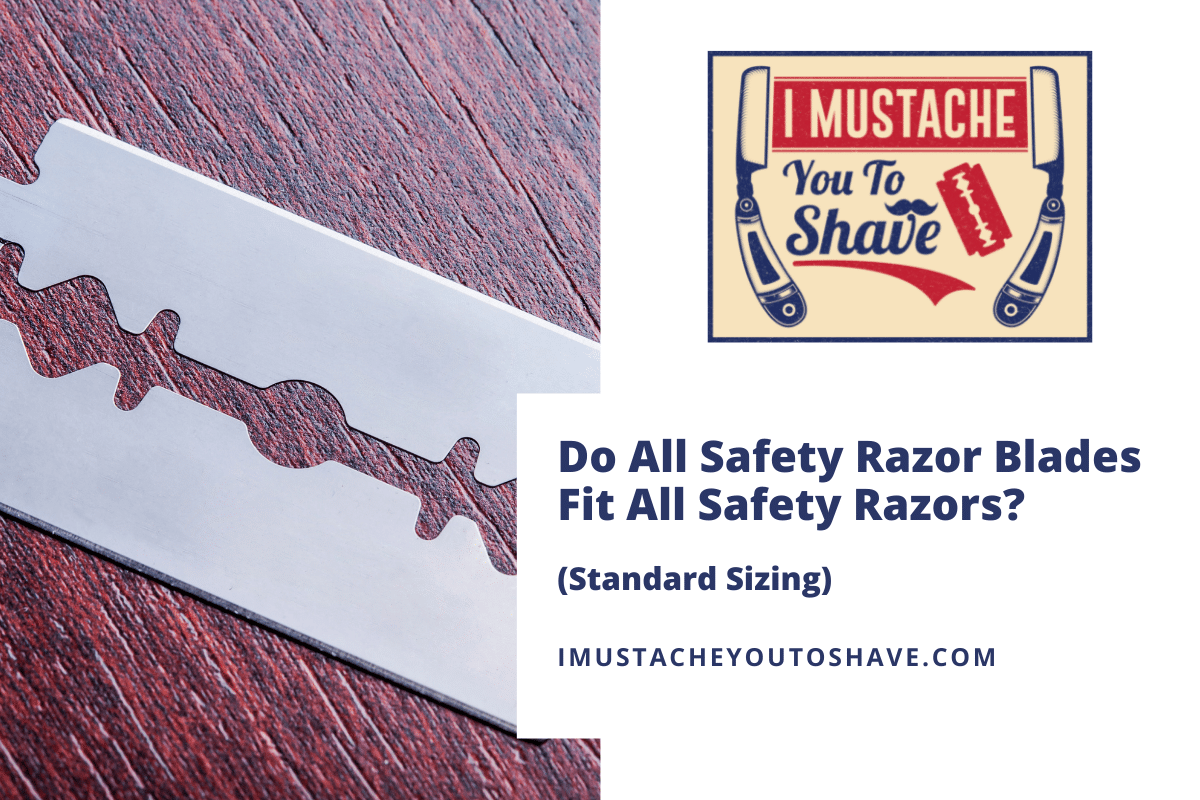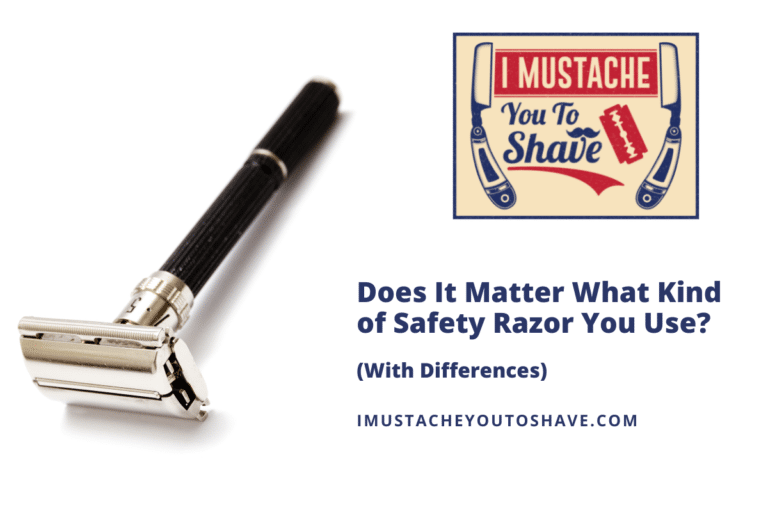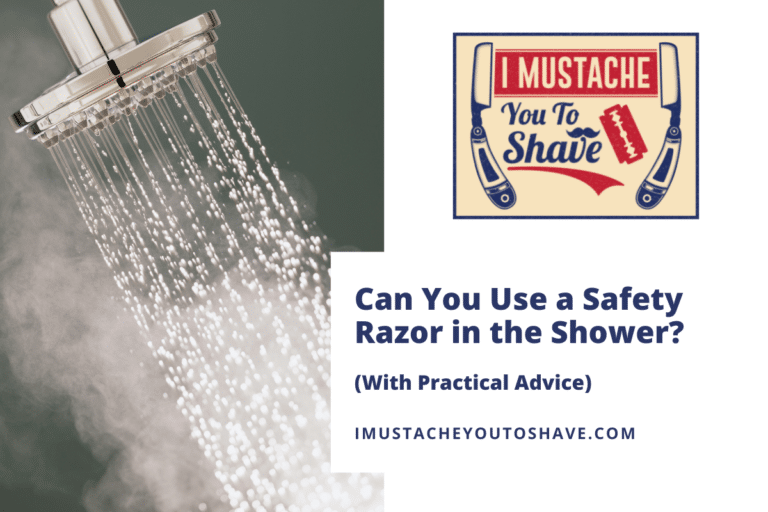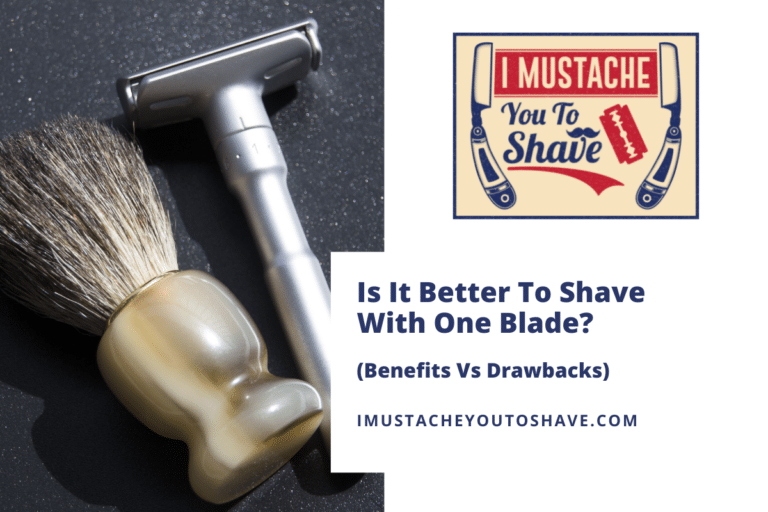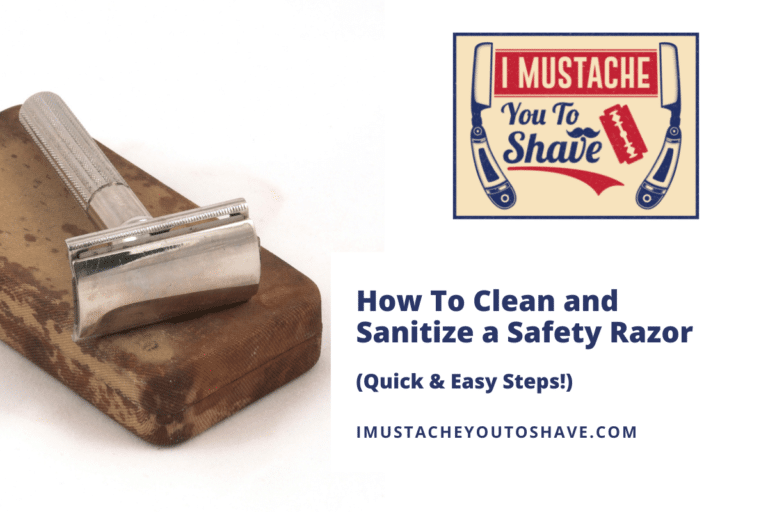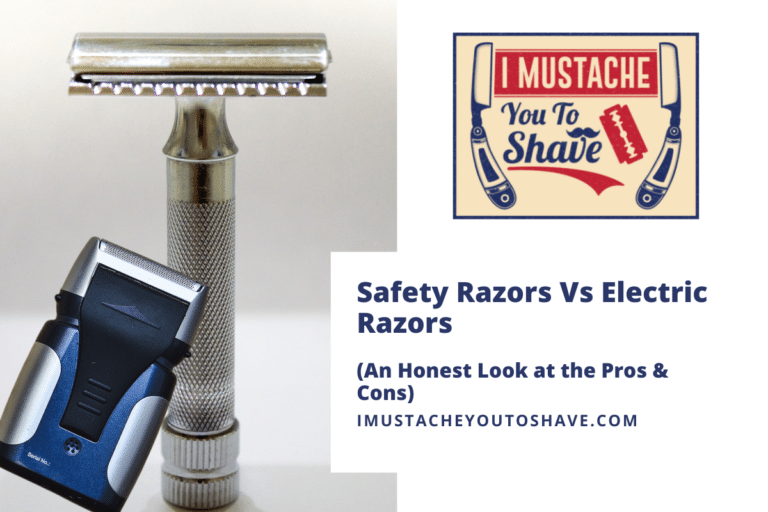Do All Safety Razor Blades Fit All Safety Razors? (Standard Sizing)
Shaving with a safety razor is an affordable, efficient way to shave. But with the seemingly hundreds of options for safety razor blades, how do you know if a razor blade will be compatible with your safety razor?
No matter the brand of safety razor blade you choose, it will fit your safety razor. All double-edge safety razor blades will fit inside any double-edge safety razor, and all single-edge safety razor blades will fit inside every single-edge safety razor. The differentiation features between brands will be sharpness and any coatings on the blade.
If you want to know more about the differences in sizes between razor blades -and why the size difference won’t stop you from being able to use any brand of blade in any brand of razor – be sure to keep reading.
Will all safety razor blades fit in all safety razors?
All safety razor blades are compatible with all safety razors. It may seem shocking, but you can buy a double-edge razor blade made by one brand and use that same razor blade on a different brand double-edge safety razor.
The standardization of safety razor blades has helped shavers experience different razor blades made all over the world without worrying about compatibility with their razors.
So, how did this happen?
A Brief History of Razor Standardization
Before safety razors were invented, most men used straight razors to shave. Going to a barbershop or self-shaving with a safety razor was common practice.
In the early 20th-century, the Gillette Company created the first alternative to straight-razor shaving: the Gillette safety razor. By World War I, Gillette became the main supplier of men’s shaving products for the U.S. armed forces. Service members became so used to shaving daily and using Gillette’s razors that it became the preferred brand when the soldiers returned stateside.
With the newfound success and capital, Gillette captured the market share of razors and razor blades in the United States by the 1930s.
As a result of being the dominant razor and blade manufacturer in the U.S., many other companies worldwide began tweaking their designs so their blades would be compatible with the Gillette-brand razors. Eventually, the design of razor blades and razors was naturally standardized to accommodate Gillette’s design.
Are all double-edge razor blades a standard size?
Upon first inspection, it certainly seems like all double-edge razor blades are the same standard size. However, there are slight variations in size for these razor blades. Knowing the difference can help you find the razor that works best for you.
“But didn’t you just say all safety razor blades work for all safety razors?”
All safety razor blades will fit, more or less, inside safety razors. The differences lie in the width of the blade and the blade thickness.
According to Giovanni Arbate, there’s a width difference between razor blade brands. By using a precise digital caliper, Giovanni measured the width of each razor.
The difference between the smallest razor blade (width-wise) and the largest was nearly 0.56mm. Now, this doesn’t seem like a huge difference, but that difference can have an impact on your shave, especially if your safety razor has a small head.
The only time you should be concerned about compatibility is if you are using a vintage or antique razor or razor blade. Occasionally, these antique razors won’t have the standardized system that almost all razors have today.
Are all single-edge razor blades a standard size?
Because of Gillette’s massive impact on the shaving industry, almost all brands have standardized their single-edge razor blades and single-edge razors.
On the whole, single-edge razor blades are also the same size and can fit any single-edge safety razor.
While there hasn’t been a comprehensive study on width differences for single-edge razor blades, the width from blade to the blade is most likely fairly similar.
Like double-edge safety razors, be cautious about using antique single-edge safety razors or blades. Sometimes these razors can have a completely different loading system than the standardized system modeled after Gillette safety razors.
How are razor blade brands different from one another?
If razor blades from any brand can work in almost any razor from any other brand, why are there so many brands to choose from?
There are dozens of razor blade manufacturers, and each manufacturer can have multiple brands to choose from. When presented with these different razor blade options, it’s important to know what you’re dealing with.
We already discussed the size differences in razor blade widths, but are there any other differences that can distinguish one razor blade from another?
There are two big differences in any razor blade: sharpness and coating. Additionally, the razor that you use may impact how a razor blade performs. Experimenting and exploring different kinds of razor blades is an affordable way to tweak your shaving experience.
For example, if you’re using an aggressive safety razor with a large, open comb, you may want to use a mild razor blade. Keep reading to learn more.
Sharpness
One of the most notable differences between razor blades is sharpness.
It’s important to note that sharpness doesn’t necessarily mean it will provide the best shave. Pairing an aggressive razor with an aggressive razor blade can lead to plenty of knicks and cuts in an unskilled hand. That’s why exploring the synergy between your razor and different blades can yield some of your best shaves.
Certain brands tend to carry a reputation for being sharp or aggressive, razor blades. One of the best examples of an aggressive razor blade is Feather, a popular brand manufactured in Japan.
If you’re looking for a mild or medium razor blade that isn’t as aggressive as the Feathers, try using a Derby, Wilkinson, or Merkur. Each of these blades is a little more forgiving in its sharpness. When paired with an open comb, you may find a more comfortable and efficient shave.
Coatings
The other difference in razor blades is coatings.
Coatings are applied to stainless steel razor blades to help increase the durability and smoothness during the shaving process. Without coatings, razor blades don’t glide as easily when they come into contact with skin.
There are three razor blade coatings that provide different properties to the razor blade: platinum, chromium, and tungsten.
The most popular razor blade coating is platinum. Razorblade manufacturers prefer platinum because it imparts durability while providing a smooth coating. Its price point makes the razor blades slightly more expensive, but it has become an industry standard.
Besides platinum, there is also chromium. Chromium is used for a mostly cosmetic effect. It has the same properties as platinum, more or less, but it is shinier and smoother than platinum. If you want a smooth shave, be on the lookout for chromium-coated blades.
Last, but certainly not least, is a tungsten-coated razor blade. Tungsten coating provides the classic, smooth feel that the other coatings provide. However, it is also stronger than steel, adding more durability to the razor. If you’re someone who likes to get a couple of shaves out of their razor blade before tossing it, be sure to give a tungsten-coated blade a try!

